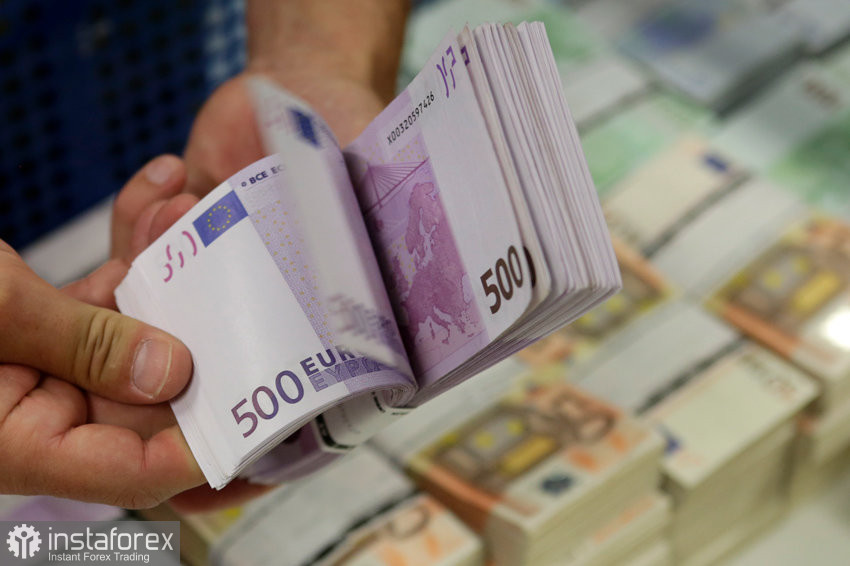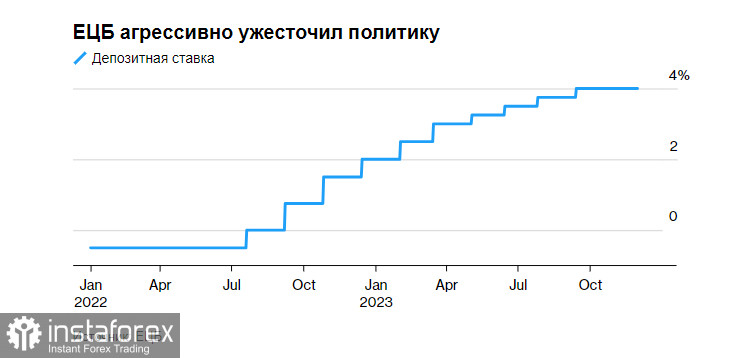The euro and the pound sterling continue to decline amid mounting talk that the European Central Bank (ECB) is likely to be among the first to start lowering interest rates next year. The fact is that there are real risks of pushing the eurozone economy into a recession because of an aggressive fight against inflation.

At the last meeting of this year, the ECB's forecasts and any accompanying statements will be of vital importance. Many policymakers, including President Christine Lagarde, are weighing how aggressively they should resist market expectations for interest rate cuts. With rapidly weakening inflation, a fragile economy, and a shift in stance by many hawkish ECB policymakers, traders expect a rate cut as early as March next year. They currently anticipate that by the end of 2024, interest rates in the eurozone will decrease to 2.5%, whereas just last week, they foresaw borrowing costs to remain above 3%.
The euro is reacting to this decline. Talks about this scenario have been ongoing since early December. This explains why the EUR/USD pair has been falling. Regarding the technical outlook, buyers now need to consider how to regain control over the 1.0780 level. If bulls plan to gain control over the market, they should swiftly reach 1.0810. From this level, the pair may advance to 1.0840. However, it will be quite challenging to do so without the support of major traders. The ultimate target is the high of 1.0870. In the event of a decline, I expect significant actions from major buyers only around 1.0740. If they failed to be active there, it would be wise to wait for a retest of the low at 1.0720 or open long positions from 1.0670.
If the markets' predictions are right, the ECB will be the first among major central banks to lower rates next year, concluding an aggressive cycle of policy tightening. However, European officials are not rushing to act, even though their new forecasts will need to account for the changed economic situation with a lower price outlook.

The challenging situation faced by policymakers resembles December 2021, when officials hesitated to raise interest rates amid the aggressive stance of the US Federal Reserve. This resulted in a surge in inflation and a battle that is currently ongoing at full throttle. Now, ECB President Christine Lagarde and her colleagues confront a similar compromise, grappling with the question of which mistake is better: lowering rates too early and allowing inflation to rise again or further dampening economic growth, which has recently been less than stellar.
As mentioned earlier, next week, the ECB will release more comprehensive forecasts, which will include a semi-annual data collection process. The December forecasts are also the only ones among the four annual projections covering a longer horizon, including 2026. Previously, the ECB predicted inflation to average 3.2% next year, returning to the target of 2% in the second half of 2025. This forecast appears outdated, as November's consumer price growth slowed to 2.4%, the lowest level since mid-2021.





















